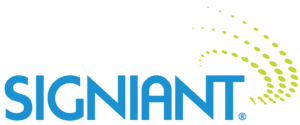More than software: SaaS is a relationship

Weekly insights on the technology, production and business decisions shaping media and broadcast. Free to access. Independent coverage. Unsubscribe anytime.
As cloud technology becomes mainstream in media, the highly customized applications deployed by early adopters are increasingly being retired in favor of off-the-shelf, multi-tenant SaaS (Software as a Service) solutions. Well-designed SaaS offers economic advantages in terms of much faster onboarding times, orders of magnitude lower TCO and the ability to stay up to date more easily in today’s rapidly changing environment. SaaS solutions are updated regularly based on customer feedback and usage data, so as new trends emerge, vendors can respond quickly to the benefit of their customers.
But SaaS is more than just software. The services components are equally important in building long-term partnerships that provide economic value to both customers and vendors. It’s the new model for a more technologically advanced and efficient industry. Signiant has learned a lot about best practices in leveraging the cloud.
SaaS should not imply cloud storage
One thing that often gets confused when we talk about SaaS is storage. Because of popular consumer-oriented services such as Dropbox that bundle storage with their software, people often assume that is true of all SaaS. This is not the case, and in media it’s a critical differentiator. While SaaS is run in the cloud, the right architecture allows customers to move, access and act on files in any type of storage, whether on-prem or in the cloud.
That is one of the key reasons Signiant Media Shuttle has become one of the top solutions for sending and sharing large files in the industry. It allows users fast, seamless and secure access to content from a browser regardless of where that content is stored. And while many companies are using cloud storage for certain projects, very few companies are considering a wholesale move to cloud storage due to the costs and lack of control. The right SaaS architecture allows for storage independence, providing an abstraction so any storage can be used with a SaaS solution, regardless of type or location.
Off-the-shelf vs. custom software
While many media companies have unique workflows, the days of investing millions in custom solutions appear to be coming to an end in favor of much more cost-effective off-the-shelf products that have most of the functionality required but offer huge economic benefits and far more agility. Additionally, there is a powerful network effect from working with a SaaS leader, especially one with an industry-focus in your market.
As new requirements emerge, well-architected, multi-tenant SaaS products are updated automatically to keep up with the market dynamics. A recent example of this is Signiant’s introduction of its IMF-Aware capability. As the standard emerged, many Signiant customers were beginning to leverage IMF, so adding support in Media Shuttle was a natural evolution. Any Shuttle customer will have the ability to explore an IMF package in a user-friendly way and download just the content they need. With custom software, you would have to go back to your vendor, spec out the requirements, pay for the new capabilities, and probably wait months before you had access. With multi-tenant SaaS, everyone benefits from being part of the network.
Best practices in customer support
Entering into a partnership with a SaaS vendor that has a high-level commitment to services can provide enormous advantages to customers. Because the software vendor is responsible for operating the cloud environment, it removes the burden of procuring, managing and maintaining on-premises infrastructure, while automatically providing the latest product releases without impacting customizations. Well-executed services also improve the usability of products over time.
But not all vendors are fully invested in the relationship with their customers or their service responsibilities. They may outsource components of them or have in-house service teams that are not integrated with product development, creating disconnect and inefficiencies. Signiant services are delivered through three teams that work alongside Signiant engineers: Customer Success, Customer Support and SRE.
Customer success
With advanced B2B software like Signiant provides, onboarding new users has always been critical to customer success. However, since SaaS does not require the extensive IT preparation that traditional software does, it’s easy for SaaS vendors to be completely hands off. Every new customer at Signiant is assigned a personal customer success manager to ensure that the product is being utilized in the most efficient way for their business.
Customer support
Customer support is, in many ways, the team that ties all product teams together. Traditionally, support teams are often siloed away from most of the company or even outsourced. Signiant’s support team works closely with our software engineering team and prides themselves on their close relationship with our customers. This allows any customer issues that arise to be addressed efficiently, and learning can go directly into product improvements. The biggest objective testament to that value are the 97 and 95 Net Promoter Scores earned by our support team in 2017 and 2018, respectively — meaning 97 and 95 percent of people who interact with Signiant support would recommend it to others.
Site Reliability Engineering (SRE)
SRE brings together the two crucial elements of software engineering, development and operations. The SRE methodology combines the entire software development, deployment and monitoring lifecycle and ensures 24/7 availability for customers. Ideally, SRE is a cross-functional practice in which developers are actively involved in releasing and monitoring the software they write. With the infrastructure and the code being so tightly coupled, efficiency is improved.
The benefits of SRE services to customers can be simplified into three categories: product updates, monitoring and security. Signiant’s SaaS customers automatically receive product updates, with no downtime or maintenance windows needed. SRE is also a core aspect of Signiant’s defense-in-depth security practices and utilizes software packages, audit tools and scanning tools to make sure we are as secure as we possibly can be.
Choose your partners wisely
At Signiant, M&E is our core market and we strive for a customer-centric approach to everything we do and that translates into an appreciation for the partnerships SaaS allows us to have with our customers.
About Signiant
 Signiant’s enterprise software provides the world’s top content creators and distributors with fast, reliable, secure access to large media files, regardless of physical storage type or location. By enabling authorized people and processes to seamlessly exchange valuable content – within and between enterprises – Signiant connects the global media supply chain. For more information, please visit www.signiant.com.
Signiant’s enterprise software provides the world’s top content creators and distributors with fast, reliable, secure access to large media files, regardless of physical storage type or location. By enabling authorized people and processes to seamlessly exchange valuable content – within and between enterprises – Signiant connects the global media supply chain. For more information, please visit www.signiant.com.
The article above is sponsor-generated content from Signiant. To learn more about sponsor-generated content, click here.






tags
SaaS, Signiant, Signiant Media Shuttle
categories
Content Delivery and Storage, Media Asset Management, Partner Content, Software